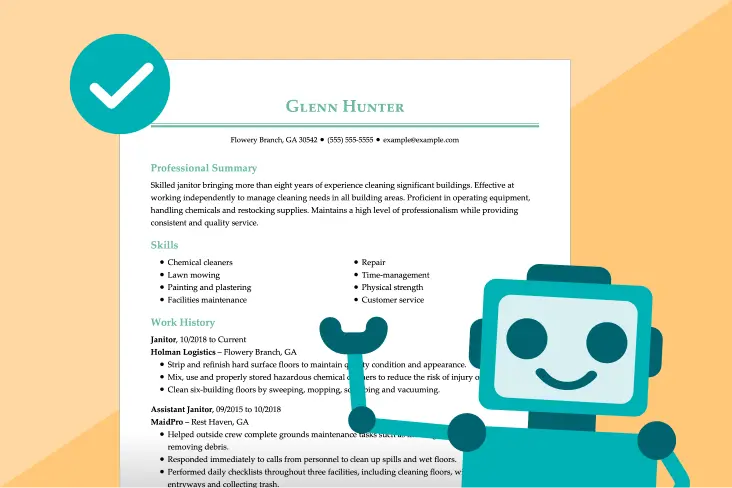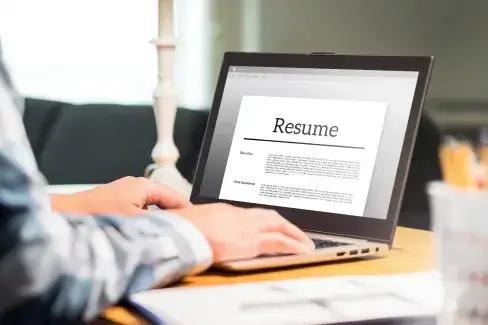AI-Friendly Resume Writing Tips to Impress the Bots
The American job market is hot, and it’s no secret that companies rely on AI-based application screening software to sift through an influx of applications. Companies use AI not only to streamline the resume review process, but also to reduce bias while narrowing down applicants.
In fact, 98 percent of Fortune 500 companies use a type of AI-enabled tool called an Application Tracking System (ATS) to filter out candidates before a human reviews resumes.
There are various brands of these AI-powered systems that corporations use. However, it’s not just large companies that utilize an ATS for resume screening. Studies have shown that 50 percent of mid-sized organizations already use some form of AI in their hiring processes, too.
If you want to outsmart the AI bots of the ATS, there are some straightforward rules you should follow and tips to learn. After all, machines are efficient in identifying qualified candidates, but they aren’t perfect. Don’t miss a chance to land your ideal job by overlooking some of the key requirements to make it past the first round of application review.
Not all applicant tracking systems are made alike, but the machine-driven AI technology works similarly in most of them. The machine learning algorithms extract and divide the content of your resume into categories and identify keywords that match with the skills required for the job.
An ATS considers how frequently a keyword appears within the resume and the relevance of the keyword in context. Ultimately, candidates are either rejected or shortlisted. When a candidate is shortlisted, their resume is stored in the ATS, where the recruiter can find candidates using keyword searches, in a similar way someone would search Google.
An AI-friendly resume is perfect for young job seekers, helping them pass screenings and prepare for some of the best internships for students or their first job.
Next, we’ll cover the top six things your resume needs to make it past an ATS scan.
Pro tip: You can skip the reading and be sure that your resume passes the ATS by using our best tool for the job, our Resume Builder!
Career experts crafted our Resume Builder to make ATS-approved documents. That way, you can rest assured that your formatting, design and headings are all ATS-friendly.
The builder features 25+ ATS-tested resume designs from which to choose!
There are hundreds of different applicant tracking systems that are AI-driven. How can you optimize for all of them? Follow these six main guidelines:
1) Upload your resume as a Microsoft Word document
Many people assume a PDF is the best format for uploading your resume. Unfortunately, many AI-driven application screeners still aren’t compatible with PDFs. Upload your resume as a .doc or .docx Word document to be safe.
2) Customize your resume copy with the right keywords
As mentioned, an ATS determines whether you’re qualified or not based on how your keywords match the terms in a position’s job description. An increasing number of ATS software brands are able to recognize synonyms, but plenty of exact-match systems are still used by companies.
For example, the job description may ask for the candidate to have a strong background in “international affairs.” If you wrote “global affairs” instead of “international affairs,” your resume could get filtered out because you didn’t use the exact verbiage the employer used.
3) Avoid key information written in headers and footers
The AI bots of an ATS might not be able to parse and read information in the header and footer of a document. Find another place on your resume to put key details like contact information so your information is properly saved and stored.
Create a resume in minutes that will impress hiring managers
Build Resume4) Use a hybrid resume format
A “hybrid” resume format is the standard resume format that combines a professional summary and key skills section along with a record of chronological achievements and work history. Since ATSs need data in chronological order to parse it correctly, this is a safe choice. There are various versions of resumes that you can choose from to match this format.
5) Avoid fancy formatting
Ultimately, the ATS will convert the document to a text-only file, so graphics or unnecessary embellishments lower your chances of beating the bots. Steer clear of the following when formatting:
- Images/photos
- Graphics/logos
- Custom bullets (the classic circular or square ones are okay)
- Colors used to highlight words
- Charts
- Columns
- Tables
- Bold
- Italics
- Underline
6) Check that your resume complies with ATS bots
One hack for double checking that your resume would pass an AI bot’s tests would be copying and pasting your resume into a plain text converter. Does the content look disorganized? Did anything get eliminated? Your resume will not pass the ATS readability test if the plain text version is missing elements or rearranged the sections incorrectly.
Mistakes to Avoid for AI-Friendly Resume Writing
Although AI-driven ATS systems aren’t perfect, they do help recruiters and employers more quickly find the resumes of those who are truly qualified for a position. Here are three mistakes people tend to make that you should avoid at all costs.
1) Don’t try to trick the AI bots
Honesty is imperative in every stage of the job application process. If you try to game the system, it will backfire — ultimately, it’s a human hiring manager reviewing your application. Don’t think that you can get away with applying for multiple roles within the same company at once. AI screening technology isn’t perfect, but it will definitely flag you if you blatantly try to cheat the system.
2) Don’t use vague or generic language
In an effort to comply 100 percent with ATS-friendly keywords, some job candidates lose sight of the big picture of what they’re trying to convey. You should still be specific when highlighting your achievements and what makes you different. Focus on explaining how you helped meet company goals, drive revenue, spearhead a series of projects, etc.
3) Don’t overuse keywords
Don’t intentionally overload your resume with keywords that you think will get your foot in the door. Not only will the system flag it as suspicious, but your interviewer will also eventually figure out if you’re not a good fit.
Why Resume Writing for Humans Is Still Important
Be sure to write your resume for humans as much as you write it for the AI bots. It never hurts to directly email the hiring manager in charge to follow up after submitting an online application. You still need to adhere to the company’s hiring procedure guidelines, but the personal touch of reaching out could mean the difference between getting noticed or not. Figure out who the key point person/decision maker is for the position, and send them a thoughtful email.
Better yet, if you have contacts within the company, see if they can advocate for you and pass your resume along to the right people. It’s important to build and nurture your network of people who would do this for you (and vice versa) before you start applying to jobs so you can build relationships organically.
Optimizing your resume for an ATS should go hand-in-hand with evaluating your current professional network and being proactive to expand it. Take a look at your LinkedIn and see what connections you might be able to bridge for yourself and others. Also, it can’t hurt to make an effort to attend professional organizations and events that are tied to your industry and niche. Check out our top six tips for creating an AI-friendly resume below.
Positive hiring trends in the U.S. are encouraging, but more applications means more reliance on artificial intelligence. AI bots ultimately give recruiters the chance to focus more of their time on meaningful tasks and relationship building with top candidates. Nevertheless, it can be intimidating to have to craft a CV that you know beats the bots and wows humans, too.
Our proprietary resume builder has helped thousands of job candidates streamline their resume creation process across desktop and mobile. Machine learning applicant tracking systems might be efficient in identifying qualified candidates, but they aren’t failsafe. We hope our tips can help you easily make it past the first non-human round of application review.
Sources:
Enterprisers Project | Browserling | Indeed











